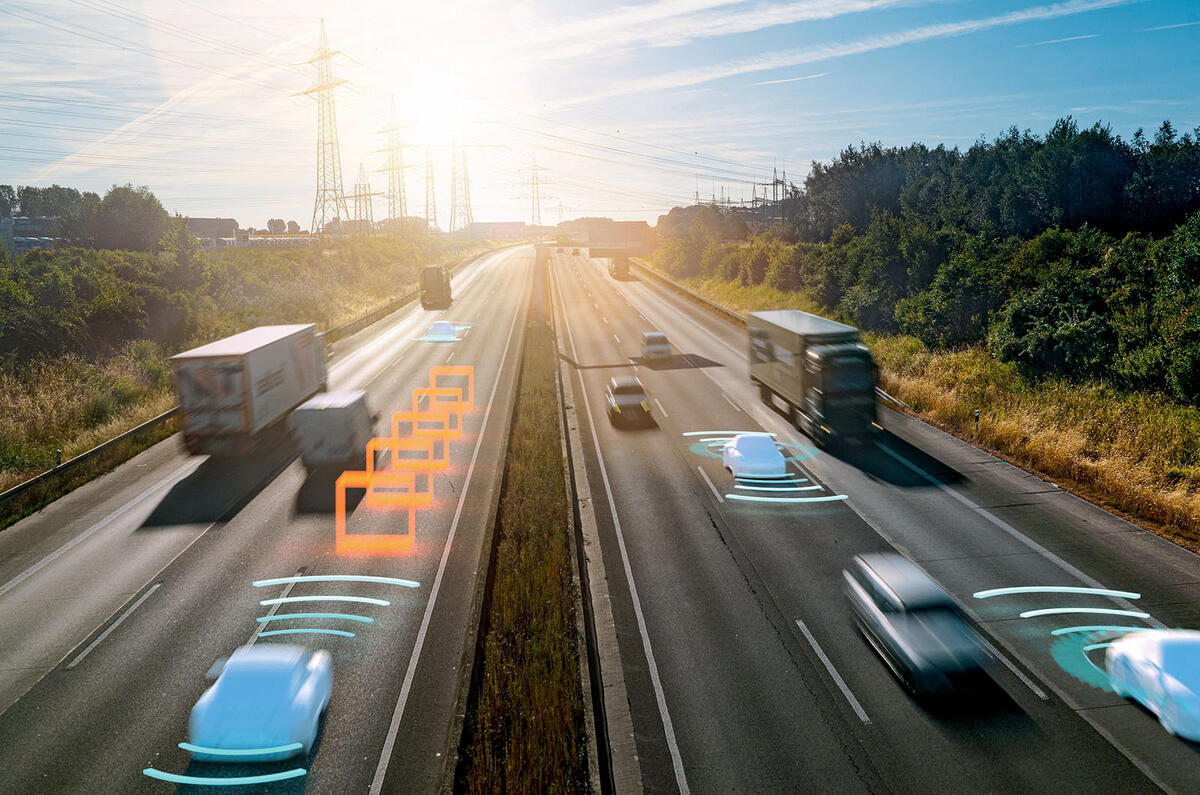It's one thing to load cars with safety systems such as ADAS (advanced driver assistance systems), but as they get more sophisticated, it becomes more complicated to ensure they always do what’s expected.
So manufacturers are turning to the most advanced techniques to validate ADAS and make it as accurate as possible. Volvo is using virtual environments together with real-world testing for safety systems development, software training and validation.
Engineers can now scrutinise incident data collected from the advanced sensors of production cars more clearly using an imaging technique called ‘Gaussian splatting’. The new approach makes it possible to generate a large number of highly realistic 3D scenes from images taken in the real world.
These can then be viewed from different angles and the scene, quite literally, explored. Once it’s created, engineers can manipulate the virtual environment by modifying elements such as road users or obstacles and change the outcome of a scenario.
The approach makes it possible to subject safety software to a wide variety of traffic situations much faster and on a greater scale than before. It’s proving particularly useful for exposing safety systems to rare and sometimes dangerous ‘edge cases’ in days rather than months.
The virtual environments are developed through an in-house collaboration with Zenseact, an AI and software company founded by Volvo Cars. Porsche has also developed a new technique to improve its ADAS software.
Manual validation – involving a development engineer sitting in the passenger seat comparing what ADAS thinks a traffic sign reads with what it actually says – is becoming too labour-intensive.
If ADAS gets it wrong, the discrepancy is recorded on a data logger (a kind of hard drive) manually by the human co-driver, along with the actual vehicle speed data.
A vast amount of data is needed to weed out those rare instances that may trip ADAS up, but automated measuring equipment is expensive and using it across large-scale test fleets is unrealistic.
Porsche’s answer is the ComBox app, developed in-house, combined with an image-recognition app from start-up firm Peregrine.ai, both of which run on a smartphone.
If there’s a discrepancy between a road sign recognised by the Peregrine.ai app and what the vehicle’s ADAS ‘thinks’, the Peregrine.ai app photographs the sign and both the vehicle data and the picture are stored on the data logger.




Join the debate
Add your comment
PS can we be more honest " ADAS (advanced driver assistance systems)", they're not 'advanced driver assistance' they're (for) dumb driver systems, those not, too lazy, unable to, drive with due consideration etc. DADAS.Should not be being lazy and expecting something else to make up for the inability. There's a basic driving standard requirement to get a licence, if individuals can't maintain it / improve on it then the privilage should be revoked until ability is (re) demonstrated.Have a nice day.
Seems to me the dimwits are trying to use technology, at great consumer expense, to make up for lousey driving rather than improving standards ( improving the nut behind the (steering) wheel). All it is going to do is dumb down drivers, making them lazy , more inept, relying on something else, to the point where they will disregard all the distracting bings, bongs and flashing lights?Remember if you don't us it (abilities/practice) you loose it, definately do not improve it.It would be waayyy better to improve driving standards by making Advanced driving testsmandatory a couple of years after the basic test/licence.After all doens't improved ability, cognicense and self reliance increase sustainability and security of ability?If people can't drive, maintain the ability of the basic test then arguable they should not continue to be able to hold the licence. Get the bad apples out of the barrel!
I've been driving 50 years. Most of the ADAS features are excellent on my Skoda. Lane keeping, speed warning (they very rarely show themselves when you drive correctly) , slowing the car for bends, junctions and roundabouts. Why would you want to disable them? Speed limiter is excellent and engaged most of the time I'm driving - it works as low as 20mph and will keep you down to that speed even on a steep downhill. Automatic cruise control is good with reservations. On reasonably straight roads it can be excellent, speeding and slowing with the vehicle ahead. It brakes a little later than I'd like at junctions or for joining traffic on motorways. If it loses the vehicle in front on a bend or the likes of a hump back bridge it can suddenly accelerate so you just have to be sensible where you use it.
But speed limit data is dangerously wrong so I had to disable the system that automatically changed the speed to be maintained in line with the limit. On open roads it suddenly emergency braked for a non-existent 30 limit. In town once it suddenly accelerated for a non-existent 50 limit. It slowed for side road limits that were angled wrongly and which it read as being on the main road. These all happened too frequently to be safe even when carefully monitoring it.
Things have improved from the volvo xc60 I had for a couple of years till I got rid of it. It gave lane change warnings for cracks in the road, tarmacced over previous lane markings and phantom shadows. It regularly screamed at me when returning home turning left at a roundabout with cars parked soon after on the left of the road. Twice it emergency stopped because it projected my travel as into those cars.
Hmm, do they have the ability to avoid pot holes/ craters, consider what's behind before they brake, slow people down in bad visibility, stop illegal use of lights (head, fog, indicators), force keeping a 2 second gap (more in adverse conditions) stop people using mobile phones, applying makeup, wiping baby's face, chasing a lost fag in the car, middle lane hogging etc. etc. etc.Improve driving standards not futher dumb down poor driving 'ability'.Simply enforce the principle of sensibe road use laws and get incompetent / incapable drivers off teh roads, its only a privilage not a right, or an excuse to devolve responsibilities / lower/ tollerate worsening of standards or ability, relying on imperfect 'technology'. Improve on lessening the problem, not mask the symptom.